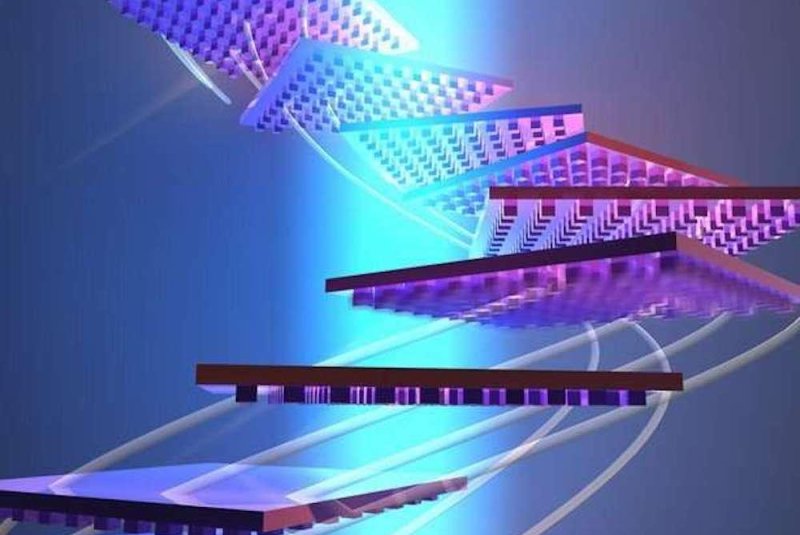According to the new light-propulsion theory, nanoscale surface patterns interact with the light and keep the propelled object trapped in the beam. Photo by Atwater laboratory/Caltech
March 19 (UPI) -- Physicists at Caltech have developed a method for levitating and propelling objects using only lightwaves. The theoretical feat relies on special nanoscale patterns etched into the surfaces of the light-propelled objects.
Researchers suggest the technology could be used to design light-powered spacecraft capable of visiting planets outside the solar system. The scientists described their theory of light propulsion this week in the journal Nature Photonics.
Physicists have previously used optical tweezers, fine-tuned laser beams, to trap and manipulate nanoparticles. Researchers have also used light to power tiny motors. But scientists have struggled to scale these technologies, which currently only work with very small objects and across very small distances.
"One can levitate a ping pong ball using a steady stream of air from a hair dryer," Ognjen Ilic, postdoctoral researcher at Caltech, said in a news release. "But it wouldn't work if the ping pong ball were too big, or if it were too far away from the hair dryer, and so on."
Ilic and his colleagues claim to have developed a technique for propelling large objects using only light.
Researchers designed special nanoscale surface patterns to interact with the laser beam and reorient the propelled object so that it remains trapped in the stream of photons. The technology doesn't require a highly focused laser beam. As such, the light source can be millions of miles away.
"We have come up with a method that could levitate macroscopic objects," said Harry Atwater, professor of applied physics and materials science at Caltech. "There is an audaciously interesting application to use this technique as a means for propulsion of a new generation of spacecraft. We're a long way from actually doing that, but we are in the process of testing out the principles."
In their paper on the novel theory, the authors suggest spacecraft covered in nanoscale patterns could be propelled by a laser on Earth, freeing it of the need for heavy fuel. The craft could then potentially reach relativistic speeds and visit other stars and planetary systems.
But before the technology is used to accelerate spacecraft, the light propulsion theory could -- according to Atwater -- speed up the manufacturing of tiny objects like circuit boards.















